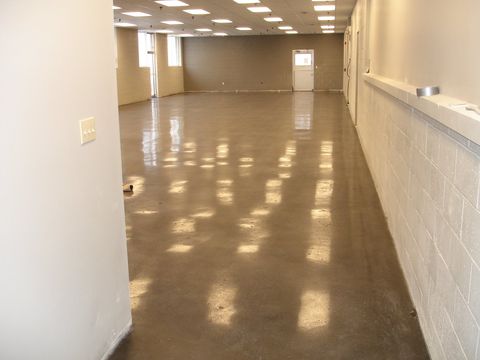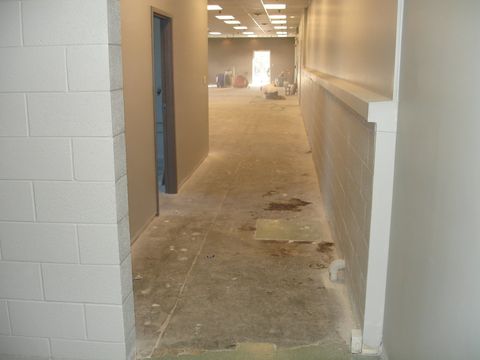Polishing
Polish
A polished concrete floor has a glossy, mirror-like finish, if chosen. The design options for polished concrete are vast. You can choose nearly any color, create patterns with saw cuts, or embed aggregates or interesting objects into the concrete prior to polishing. The reflectivity of the floor can also be controlled by using different levels of concrete polishing. Polished concrete is popular in commercial and residential buildings because it is easy to maintain. Maintaining polished floors requires dust mopping and occasional use of cleaning product. Depending on traffic it might have to be resealed and burnished.
Simply put, polishing concrete is similar to sanding wood. Heavy-duty polishing machines equipped with progressively finer grits of diamond-impregnated segments or disks (akin to sandpaper) are used to gradually grind down surfaces to the desired degree of shine and smoothness.

Polishing Process
The process begins with the use of coarse diamond segments bonded in a metallic matrix. These segments are coarse enough to remove minor pits, blemishes, stains, or light coatings from the floor in preparation for final smoothing. Depending on the condition of the concrete, this initial rough grinding is generally a three- to four-step process.
The next steps involve fine grinding of the concrete surface using diamond abrasives embedded in a plastic or resin matrix. Crews use ever-finer grits of polishing disks (a process called lapping) until the floor has the desired sheen. For an extremely high-gloss finish, a final grit of 1500 or finer may be used. Experienced polishing crews know when to switch to the next finer grit by observing the floor surface and the amount of material being removed.
During the polishing process, an internal impregnating sealer is applied. The sealer sinks into the concrete and is invisible to the naked eye. It not only protects the concrete from the inside out, it also hardens and increases the density. This eliminates the need for a topical coating, which reduces maintenance significantly (versus if you had the coating on it). Some contractors spread a commercial polishing compound onto the surface during the final polishing step, to give the floor a bit more sheen. These compounds also help clean any residue remaining on the surface from the polishing process and leave a dirt-resistant finish.


